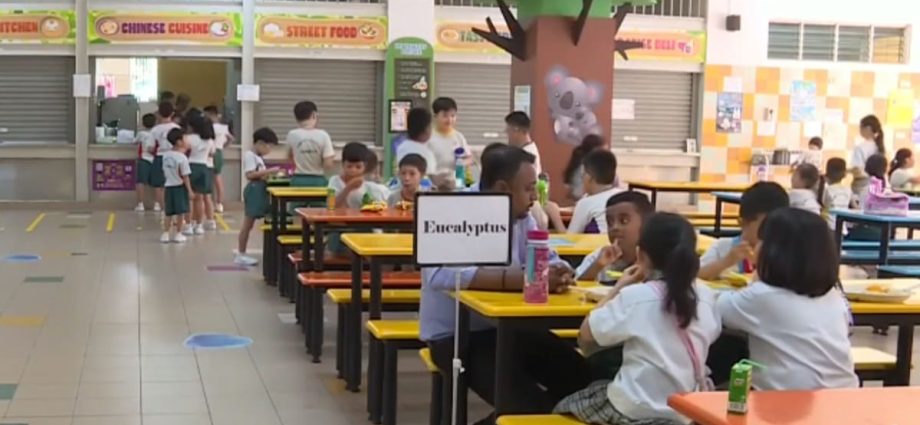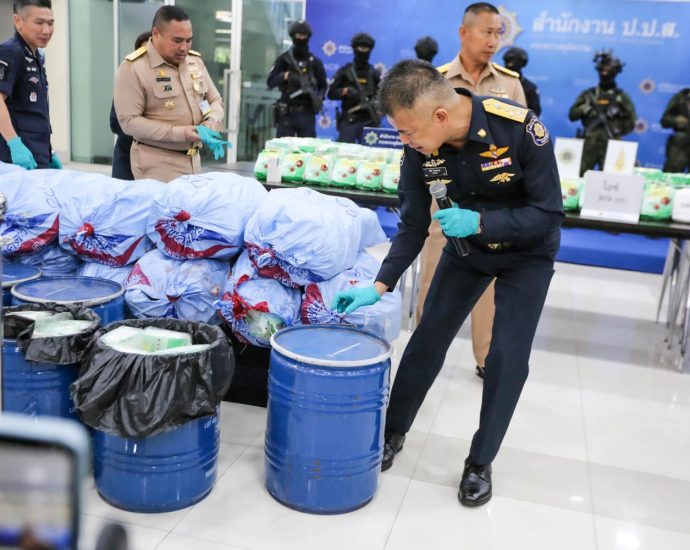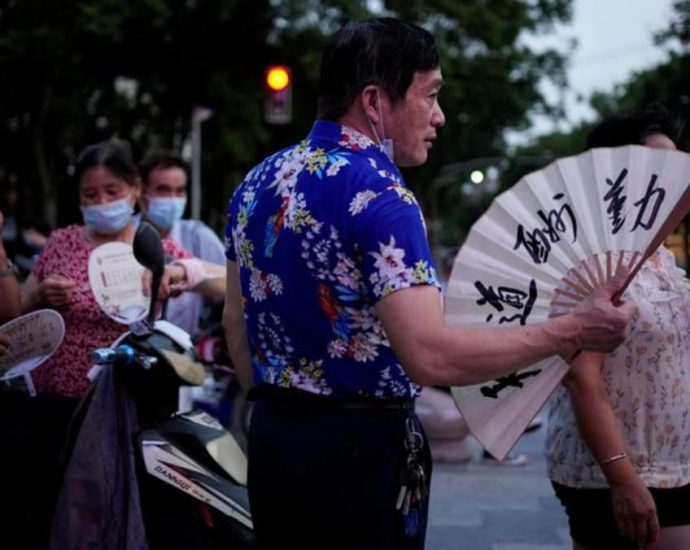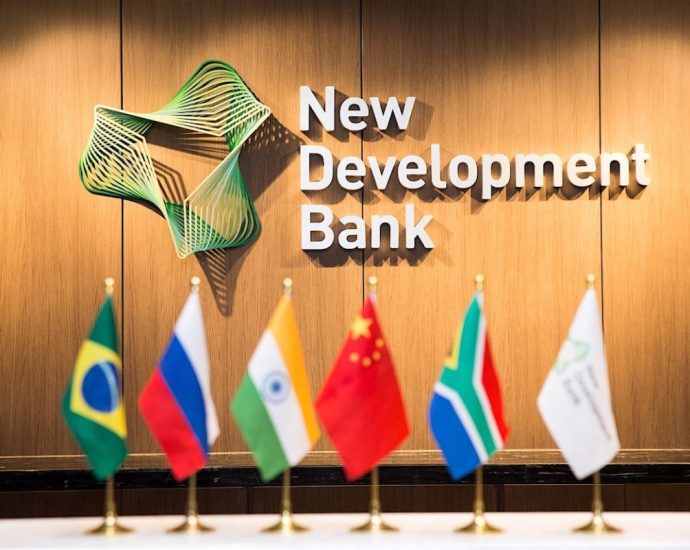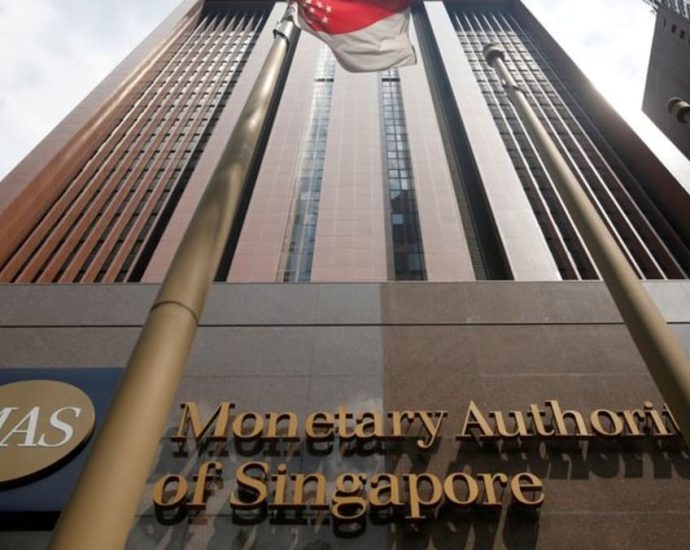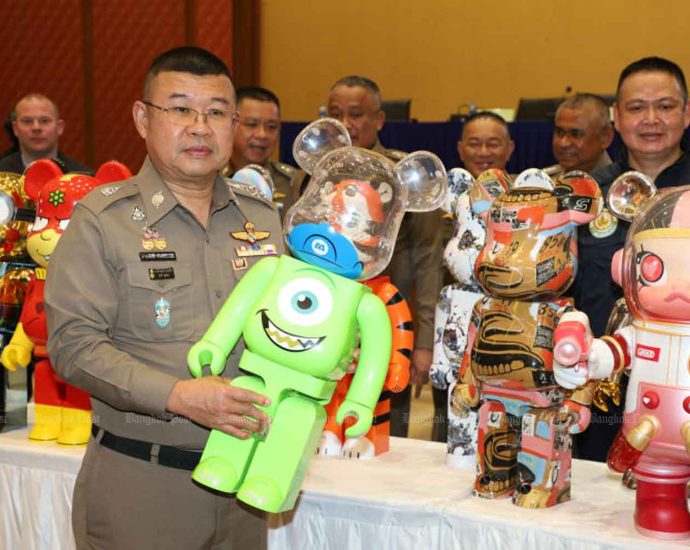New nutrition guidelines for children aim to help schools prepare healthy meals in appropriate portions
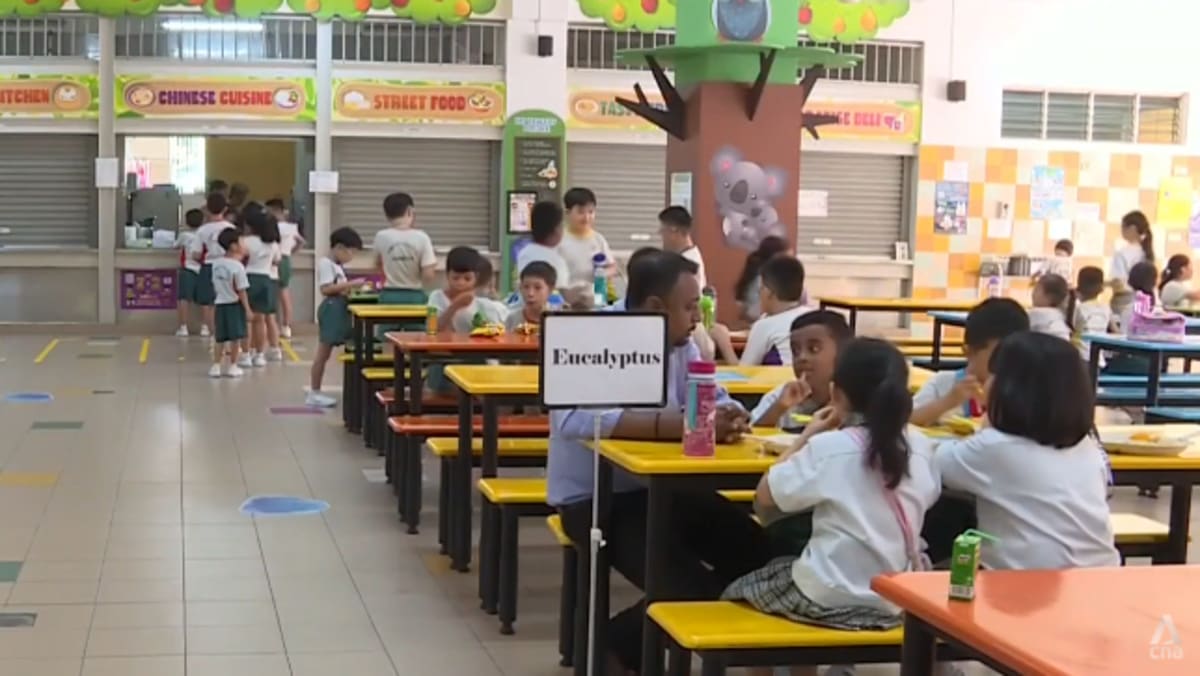
Serving some 24,000 children each year, the firm said it hopes the new guidelines can further enhance both its in-house and outsourced meals.
“With the new standard, because of stronger understanding and the alignment of expectations, we will be able to find food providers who will be readily able to provide food with the quality that we need,” said the preschool chain’s general manager Thian Ai Ling.
BOOSTING INDUSTRY STANDARDS
Some firms in the catering industry are already gearing up to adopt these guidelines.
The Singapore Manufacturing Federation, which oversees 150 food and beverage providers, said it is actively encouraging members to do so and help boost industry standards.
“For infants and children, food safety is of paramount importance given their vulnerability in this age group,” said the federation’s council member Audrey Yap.
“The standard addresses this by looking at food and beverage (F&B) players who want to get involved with serving these particular needs, and to ensure that (food produced) is age-appropriate.”
Ms Yap said she is confident that caterers will be quick to adopt the guidelines as that would give them an edge in their business.
“With this awareness of (children’s) nutritional needs … consumers could be more selective, more targeted, more specific in what they want to eat, and also looking for a healthier lifestyle,” said Ms Yap.
“Accordingly, F&B businesses that step up to the plate and are able to address this sector very quickly, effectively and efficiently, will see a return on investment.”
900kg of crystal meth seized from fishing trawler
Six arrested with shipment believed destined for Australia on boat off Koh Samet

Authorities have arrested six drug smugglers and seized 909 kilogrammes of crystal methamphetamine, believed to be destined for Australia, from a fishing trawler south of Koh Samet in the Gulf of Thailand.
The seizure was the culmination of a four-month operation that began with an intelligence report from the National Security Council (NSC), according to Wichai Chaimongkhon, secretary-general of the Narcotics Control Board (NCB).
The NSC had learned that transnational drug traffickers were using medium-sized trawlers to deliver shipments of methamphetamine and heroin, weighing about a tonne, to a large liner in the middle of the Gulf. The deliveries took place in international waters, beyond the reach of Thai law enforcement.
The NCB set up a special task force, in cooperation with the Naval Special Warfare Command or SEALs, which spent four months monitoring the activities of the suspected traffickers, said Mr Wichai.
On Tuesday of this week, team members on a stakeout in Rayong spotted the crew of a trawler loading empty stainless steel barrels, fuel and food. At 8.45 that night, a white pickup truck pulled up and the crew loaded several heavy fertiliser sacks onto the trawler before it set out from shore.
The team began following the boat and intercepted it south of Koh Samet in Rayong province, about 20 nautical miles from shore.
Six suspects were arrested with 909 kilogrammes of crystal methamphetamine seized, Mr Wichai said at a briefing on Thursday at the NCB offices in Din Daeng district of Bangkok.

Officers inspect the fishing trawler on which drugs were seized and six smugglers arrested. (Photo: Narcotics Control Board)
Authorities later searched seven locations — five in Rayong and two in Bangkok. During the search, they seized one fishing trawler, six cars, two motorcycles, bank account passbooks, ATM cards and other assets with a combined worth of at least 5.2 million baht.
Officers also searched a rented house in Rayong that was used as a storage site for drugs. Many empty fertiliser sacks were found there.
During questioning, the suspects admitted to having smuggled the drugs from Bangkok to the fishing trawler in Rayong. A bag of ketamine, for the crew’s personal use, was also found in the vessel.
One of the suspects who was the boat owner said the seized drugs were about to be loaded onto a large liner headed for Australia.
Mr Wichai said the NCB would widen the investigation to seize assets of all those involved in the smuggling operation.

Sacks and barrels containing 909kg of crystal methamphetamine seized from the fishing trawler off Koh Samet are displayed for a briefing on Thursday. (Photo: Narcotics Control Board)
Loafers Lodge fire: Man charged with NZ hostel fire murders
 EPA
EPANew Zealand police have charged a 48-year-old man with five counts of murder in relation to a deadly hostel fire.
He had already been detained and charged with arson over the blaze in Wellington last month.
Loafers Lodge, a four-storey emergency housing hostel in the capital, burned down on 16 May killing five people.
The incident has renewed debate about New Zealand’s housing crisis as the site had been home to members of vulnerable and marginalised groups.
Located just a block away from Wellington city hospital, many hospital workers had also relied on it for short-term accommodation.
Wellington Police told reporters on Thursday they had informed victims’ families of the prosecution’s charges.
The fatal blaze occurred on 16 May, shortly after midnight local time. Police soon after launched a homicide inquiry, and said they were treating the blaze as an act of arson.
The victims are still yet to be publicly identified, but they were all men aged between 50 and 67, local media reported.
At least 99 residents had been living in the building on the night of the fire.
When it broke out, some were forced to crawl through smoke to safety. Others huddled on the roof while waiting to be rescued.
One lodger, Tala Sili, said he had jumped from his window to escape the flames.
“I was on the top floor, and I couldn’t go through the hallway because there was just too much smoke so I jumped out the window,” he had earlier told national broadcaster RNZ.
“It smelt like poison,” he said.
Amid conflicting accounts from residents, Wellington’s fire authorities last month said they could not confirm whether smoke alarms had gone off in the building.
Many people in New Zealand have been cut out of the housing market due to sky-high property prices, rising rents and a shortage of government-subsidised homes.
Use of emergency housing also skyrocketed in the country during the pandemic. Government data shows the stopgap solution has become a long-term option for many.
Related Topics
Asia climate woes mount as heat shatters May records
In China, Shanghai endured its hottest May day in more than a century on Monday. A day later, a weather station in the southeastern tech manufacturing hub of Shenzhen also set a May record of 40.2 degrees Celsius. The heatwave is set to continue across the south for a fewContinue Reading
Singaporeâs plant-based entrepreneurs are targeting meat eaters
In an unassuming butcher’s shop on Singapore’s Ann Siang Hill, juicy steaks hang from hooks in the windows. Local favourites – chicken satay skewers and beef rendang – sit in cool glass booths.
But the meatiness is an illusion, the satays are soy-based and the steaks pumped up with shiitake mushroom. But, Love Handle, Asia’s first plant-based butcher, is not targeting Singapore’s vegans, or the vegetarian diets of the country’s Buddhist and Hindu communities. About 70% of its customers are meat eaters and its mission is to reach the mainstream.
“Our target audience is specifically not vegans,” said Ken Kuguru, Love Handle’s CEO and founder. “It’s a bit of a paradox. [But in everything] we are a little bit paradoxical.”
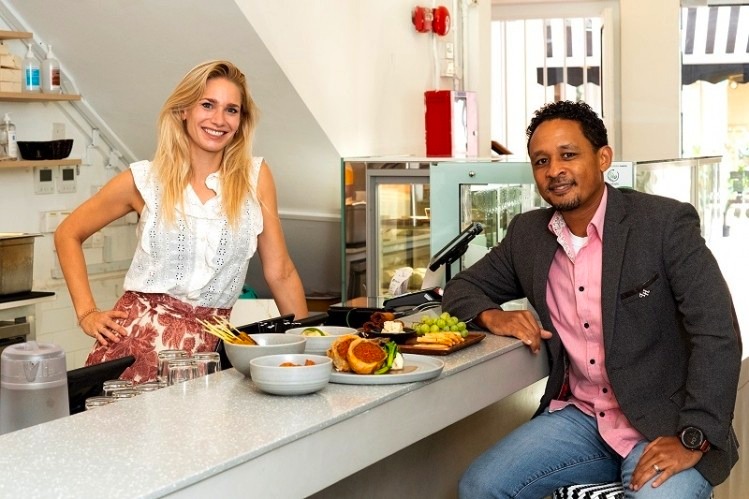
As a city-state that imports more than 90% of its food and has little room for actual livestock, Singapore has a vested supply chain interest in shifting from traditional meats.
Last year, a three-month chicken export ban from Malaysia, which provides the Lion City with about 34% of its poultry, halted the normal inflow of approximately 1.8 million broiler chickens a month. The ban caused a hike in poultry prices and concern over the country’s food security.
At the same time, environmental sustainability concerns are pushing many in Singapore and beyond to rethink their diets to reduce consumption of animal products. Restaurants and suppliers are increasingly following a similar path as Love Handle in using plant-based foods to reach customers beyond just vegans and vegetarians. Though challenges remain in making a convincing meat substitute, a rising class of Singaporean food entrepreneurs are betting on new techniques to recreate favourite dishes in a more eco-friendly way.
For some of them, this isn’t just a business decision – it’s a way to possibly prevent the worst outcomes of global climate change while preparing for a new world brought on by environmental crises.
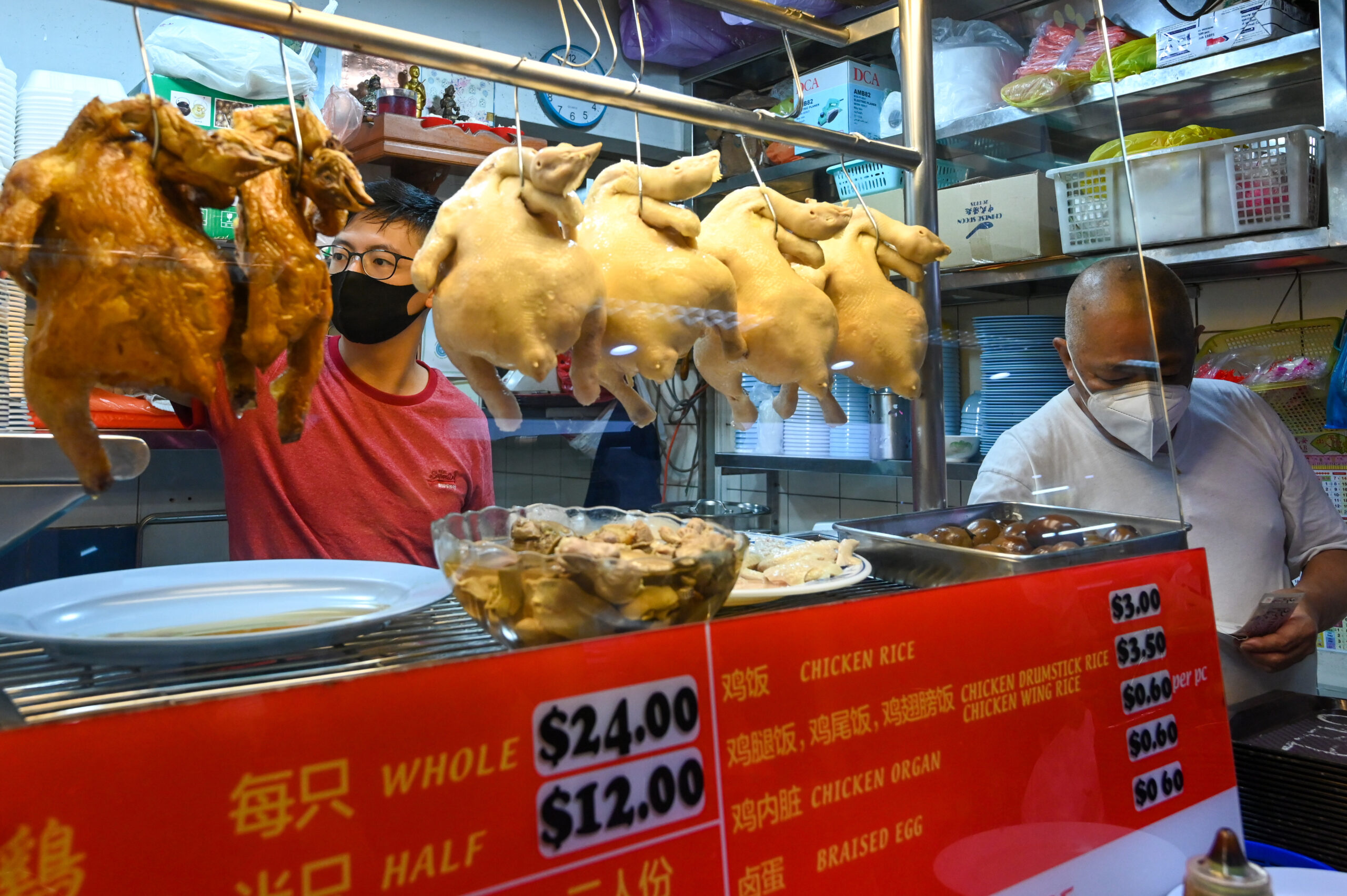
In the Lion City, about 7% of the population are vegan or vegetarian, according to a 2020 poll by research firm YouGov Singapore. Individual reasons for the diet typically include environmental and health concerns, which together accounted for 70% of the reasons to give up meat.But it is unlikely that change will be driven by the small minorities who are willing to fully embrace a plant-based diet.
“There’s a lot of dishes that already cater to this community,” said Kuguru. “It’s established, it’s traditional, it’s there – but it hasn’t grown.”
To penetrate beyond this small and set demographic, he believes it’s important to emulate the “meaty” flavours that might hold people back from moving away from animal proteins.
Love Handle’s products replicate the umami tones of meat by catalysing the natural chemical interactions released from vegetables through the cooking process. Some plant-based companies replicate meat’s bloody qualities through leghemoglobin, a red protein found in soybeans.
These kinds of efforts are already showing promise in the marketplace as consumers around the world gain a taste for the meat-free lifestyle. According to Bloomberg Intelligence data, the global market for plant-based foods could see fivefold growth by 2030.
On the other hand, the quantity of meat produced over the past 50 years has increased threefold and remains on an upward trajectory, according to an October report on sustainable food by accounting giant PwC’s strategy consulting business.
Another report by the Stockholm Environment Institute a month later stated animal-based foods could be responsible for at least 16.5% of total greenhouse gas emissions. The report warned that if current consumption trends continue, it will be impossible to keep global warming below the 1.5° Celsius mark and increasingly challenging to stay below the 2° Celsius upper limit.
Vegan alternatives of popular local food … appeal[s] to the masses, draws them in to give vegan food a try”
LK Ong, Chef, VeganBliss
The high environmental stakes have provided extra motivation to those hunting the elusive secrets of re-creating meatiness.
For VeganBliss restaurant, which opened last year amongst the bright Peranakan shophouses of Joo Chiat Road, the key to selling a wider market on sustainable eating has been emulating not just the meat, but also the meal. The restaurant’s “roast chicken rice” bestseller is made from natural gluten but resembles the sliced fillets found at most of the country’s popular hawker food markets.
“Making vegan alternatives of popular local food … appeal[s] to the masses, draws them in to give vegan food a try, [and shows them] that the switch to veganism doesn’t entail sacrificing your favourite food,” says LK Ong, chef at VeganBliss.
For other restaurants, branching out from familiarity of local favourites has raised a challenge.
“In Asia, we eat based on tradition. You eat what you do because that’s what your mum did and grandmother did,” said Christina Rasumussen, a chef and entrepreneur. “But this doesn’t work for our planet anymore … we have to change.”

After working at Michelin-starred restaurant Noma and a plant-based collective in her native Denmark, Rasmussen moved to Singapore in 2022. When launching Mallow, her first pop-up concept in the city-state, she grappled with the challenge of how to integrate a vegan business into a culinary culture that celebrates local dishes such as poached Hainanese chicken rice and seafood laksa soup noodles and where traditional hawker food markets have gained UNESCO heritage status.
“Overall, vegan concepts are not popular like you may find in other western cities,” she said.
Most of Mallow’s customers were not vegan. As she prepares to launch her first permanent restaurant, Fura, she has consciously moved away from “plant-based” or “plant-forward” labels, to instead focus on “what our diet could look like in the future, due to climate change”. The menu will use ingredients that are in abundant supply, including insect proteins.
“We don’t openly brand ourselves as being vegan on purpose as it turns many away, instead we say plant-focused,” Rasmussen said. “[We’re] slowly changing people’s perceptions of what being conscious can look and taste like.”

As a small island metropolis, making sustainable diets the norm in Singapore will rely on sustainable supply chains.
Last year’s upheaval of chicken imports brought this fact into stark relief.
“We intend to grow more food locally to serve as a buffer in times of supply disruption,” said Grace Fu, minister for sustainability and the environment, in a parliamentary response to the chicken situation.
Fu and others in government used the issue to promote Singapore’s “30 by 30” campaign, an ongoing effort that aims to boost domestic food production to about 30% of everything consumed in the city-state by the end of the decade.
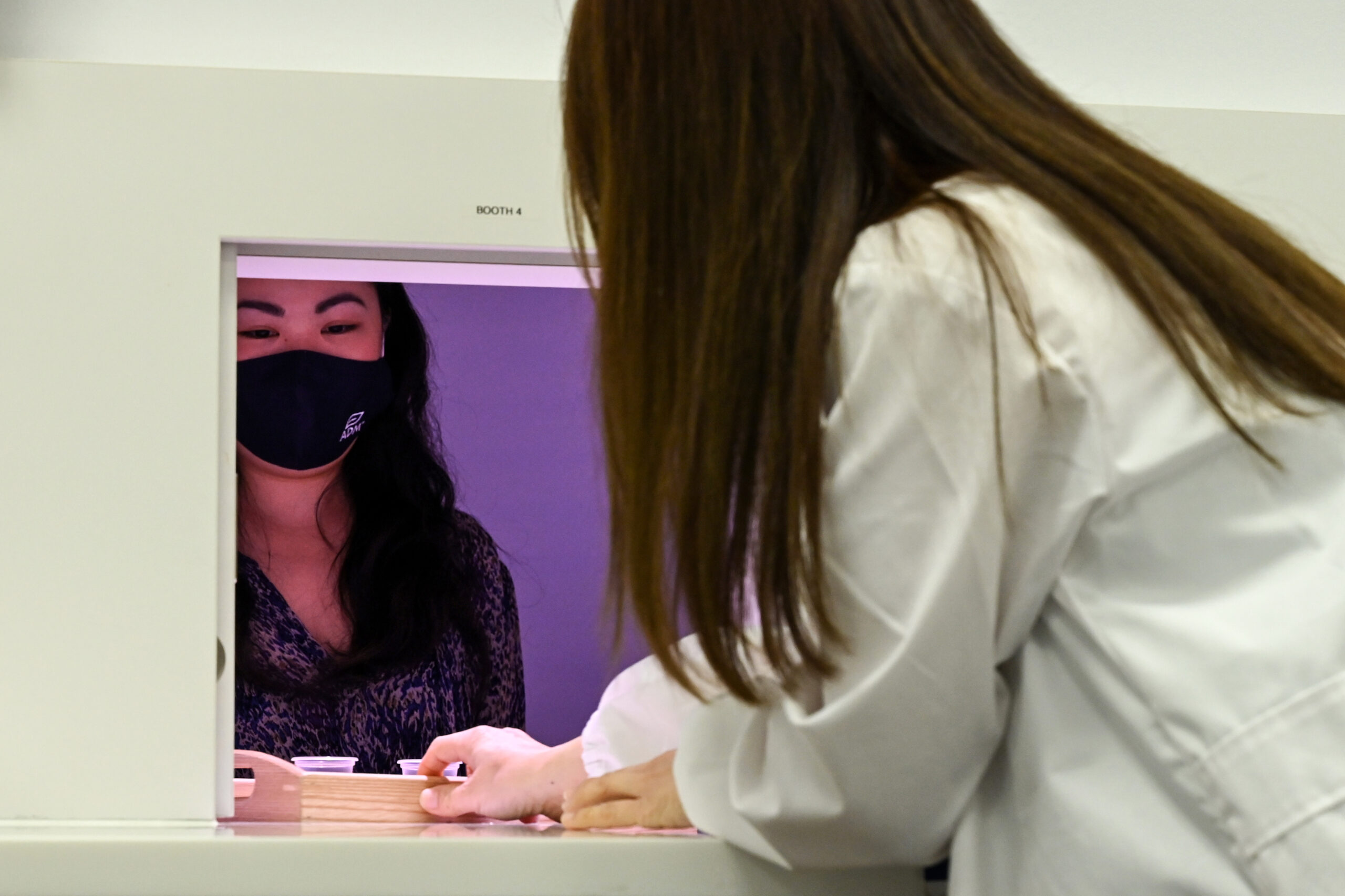
Restaurants including Love Handle and Fura focus on native ingredients such as soybeans, jackfruit and mushrooms. But the market still faces serious challenges in cost accessibility. Currently, Love Handle’s prices parallel those of high-end meat butchers in the city.
“Green Rebel” beef steak, made from mushrooms and seasoned with Cajun spices, costs $5.91 (SGD 8) for a 180 gram portion, while a 100 gram packet of vegetable “sausage” mince is priced at $5.17 (SGD 7).
In comparison, $10.16 (SGD 13.75) can buy 500 grams of Australian grass-fed beef mince and a 250 gram New Zealand striploin beef steak costs $8.49 (SGD 11.50) at local supermarket FairPrice. At local wet markets, prices can be even cheaper.
“In order to bring plant-based meats closer to the [meat-eating] consumer, the company will often add in additives, flavourings, colours, textures – when you add in all these new ingredients, you add to the cost, you add to the energy consumed in the process,” said Willam Chen, a professor in food science and technology at Singapore’s Nanyang Technological University.
“Subsequent processing of plant-based protein foods to suit consumers’ demand also needs energy. There is no holy grail.”
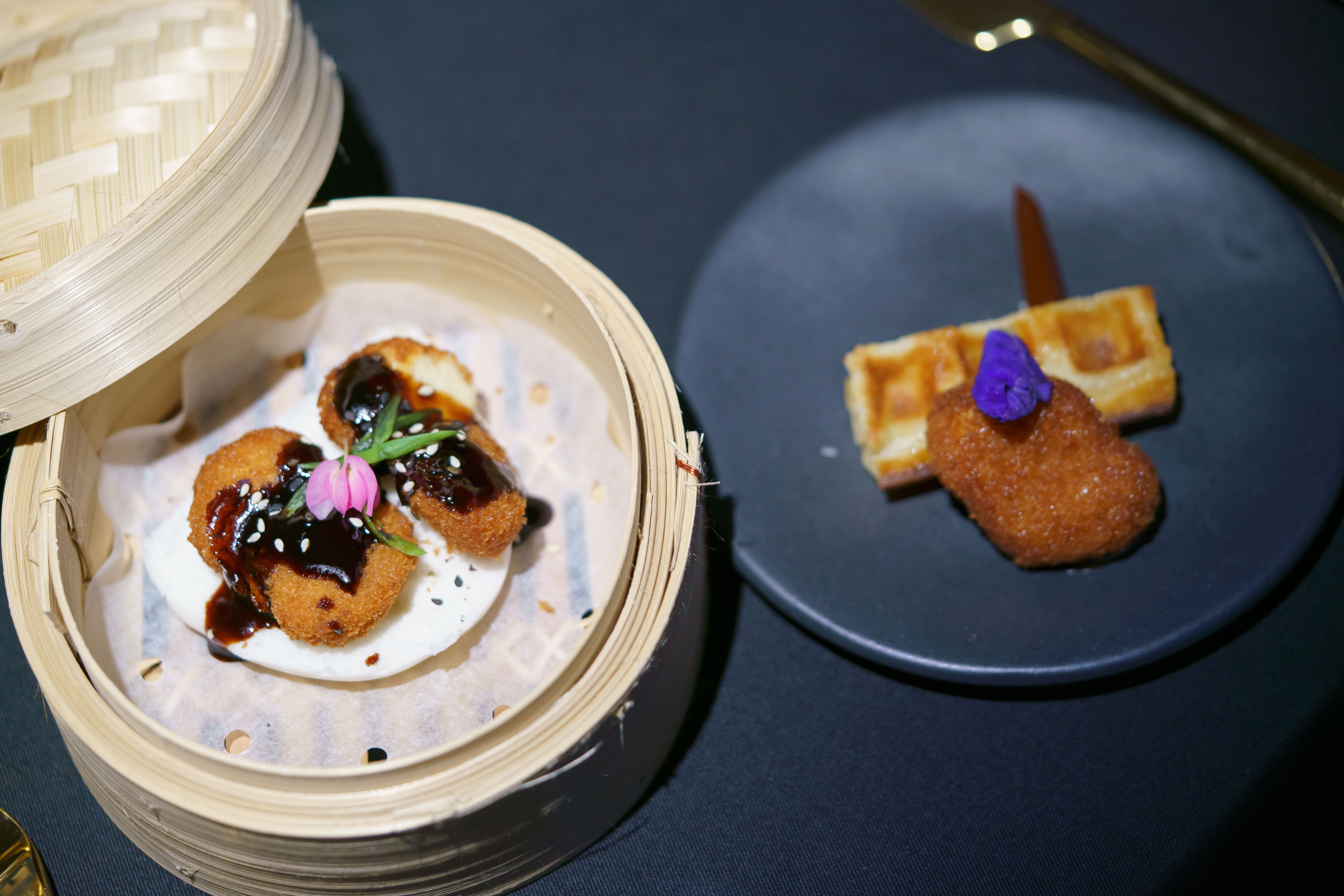
To address this issue, some innovation hubs are developing alternative proteins grown from animal cells in labs. Last year, Singapore became the first country in the world to grant regulatory approval for the sale of lab-cultured meat.
It’s a sector of innovation that fascinates Kuguru. For Love Handle’s next venture, he is partnering with a research lab to fuse animal and plant cells to create alternative proteins at a larger scale.
While not involving the slaughter of live animals, these new hybrid meats would not be considered vegan. But Kuguru is confident this move will not shut most vegans out.
“Anecdotally, the vast majority of vegans and vegetarians opted to move to a vegan and vegetarian diet because of either environmental reasons or animal cruelty reasons,” he said. “For those groups, moving to hybrid meat products would solve their core issues and allow them to reintroduce sustainable and ethical meat products back into their diets.”
As companies vye to keep up with consumer tastes, the wider industry has a more pressing issue on its plate. For Kuguru, switching to greener alternatives from traditionally farmed, animal meats may quite literally be a way to save the earth.
“Given the data on the beef industry, the carbon emissions, the amount of land that’s available, the math doesn’t work,” he said. “The planet is going to implode.”
BRICS expansion and a message to the West

Saudi Arabia is in talks on joining BRICS’ New Development Bank (NDB), a precursor to inclusion in a club that comprises Brazil, Russia, India, China and South Africa.
Extending membership to Riyadh would signal the bank’s interest in challenging the West’s monopoly over global financial institutions and represent a counterweight to rich-country clubs such as the Group of Seven, which are seen as neocolonial structures, especially in the Global South.
Saudi Arabia’s financial heft would give the BRICS – or BRICSS? – bank a more prominent role in multilateral funding and is aligned with the group’s plans to create alternative financial structures not dominated by Washington.
Critics often point out that the International Monetary Fund (IMF) and World Bank tend to be structurally under-represent the Global South in their decision-making, and are too closely aligned with Western foreign-policy goals. As global funds shrink away from investments in Russia and China, the NDB might offer an alternative.
In this context, the entry of Saudi Arabia to BRICS would send a message that its current and future members are likely to seek alternative structures of global governance and financing. The West seems to have taken note: The G7 this year invited India, Brazil, the African Union, Vietnam, Indonesia and South Korea as observers.
Double standards
Like current BRICS members, Saudi Arabia is neutral on the Russia-Ukraine conflict. One factor behind this is that while BRICS states are largely in sync with the post-World War II consensus on the sanctity of national borders and sovereignty, they share a mutual frustration with the West’s double standards in this area.
The calamitous aftermath of US president George W Bush’s Iraq invasion, which killed hundreds of thousands of Iraqi civilians, resonates as a painful reminder of that hypocrisy.
Where BRICS member states diverge markedly from their Western counterparts is on the principle of non-interference in domestic affairs, as they all operate under vastly different regime types and don’t comment on one another’s domestic politics. Politically, this is broadly the glue that keeps the BRICS together.
Saudi Arabia joining BRICS would cement this geopolitical trend while reminding Washington of its diminishing clout. Despite US President Joe Biden’s journey to Saudi Arabia last year to persuade the kingdom to raise oil output to offset high global energy prices, Saudi Arabia did the opposite.
That decision, which no doubt benefited Russian President Vladimir Putin – and which Riyadh justified on the basis of economics – was viewed as a way to distance the kingdom from Washington’s approach to Russia and China.
At the World Economic Forum this year, Saudi Finance Minister Mohammed Al-Jadaan said Saudi overseas funding would now come with strings attached: It would be tied to economic reforms in recipient countries. As such, Saudi Arabia’s BRICS membership would give the kingdom a seat at the table as the grouping seeks to reshape the global financial landscape.
Domestically, at a time when the kingdom is planning to diversify its economy, expand its tax base, and reduce its generous public sector, BRICS membership would provide a platform to showcase a new approach to external funding that is responsible and prudent.
China has likely played a role in championing Saudi Arabia’s BRICS bid. In March, Saudi Arabia joined the China-centric Shanghai Cooperation Organization (SCO) as a dialogue partner and was in active talks with China to conduct oil-related transactions in yuan.
Not that Saudi membership would raise many objections from other BRICS states. None would be averse to de-dollarization initiatives as a form of insurance against repeated American weaponization of the global dollar-dominated financial system.
After taking over the NDB’s presidency in March, Dilma Rousseff, a former president of Brazil, emphasized the bank’s future strategy to fund projects in local currencies, thus nurturing domestic markets and shielding borrowers from volatile currency-exchange fluctuations.
Expansion hurdles
As more countries express interest in joining BRICS, there are likely to be many challenges for its members.
First, the NDB is at least a decade from bypassing Western sanctions against Russia. To assuage investor concerns, the NDB suspended its financial involvement with Russia in March 2022 and has also stopped financing new projects in the country.
Second, there are territorial rivalries among the BRICS (China and India, for instance) that may hamstring the group.
Third, except for India, none of the other BRICS countries have the same rosy economic prospects they enjoyed at the group’s inception in 2009.
Fourth, the NDB has relatively little to show in terms of investments. Since 2015, it has funded about 96 projects to the tune of US$33 billion, compared with the World Bank’s disbursal of almost $67 billion for the year ending June 2022.
Fifth, member countries are separated by vast distances, have different political systems, are not fully complementary on trade, and aren’t fully aligned on geopolitical postures.
Finally, even on the issue of expansion, there are divergences on criteria among member states. Without resolving these issues, an expanding BRICS (or whatever acronym it transitions to) may collapse under the weight of its own contradictions.
Nonetheless, even as the world watches these developments unfold – with interest or trepidation – the potential BRICS expansion should be interpreted by the West as a message that it cannot advocate for an international geopolitical order or global financial system while also attempting to monopolize the definitions.
This article was provided by Syndication Bureau, which holds copyright.
Six former Great Eastern insurance agents issued prohibition orders following tax evasion convictions
SINGAPORE: The Monetary Authority of Singapore (MAS) on Thursday (Jun 1) issued five-year prohibition orders against six former agents of Great Eastern Financial Advisers (GEFA) for fraudulent and dishonest conduct. This follows the convictions of Chan Jun Yi, Chanel Quah Hui Wen, Lim Zhan Yi, Sherlin Chia Hee Ping, Jackie TangContinue Reading
Local grocers headed accused Chinese fraudstersâ firms
Duo were paid B4,000 a month for each of the 48 shell companies they represented, say police

Police have found that two grocers in Bangkok acted as directors of 48 shell companies linked to a Chinese couple facing charges of running a 10-billion-baht international fraud scheme.
The two grocers, who had shops in Thon Buri, were paid 4,000 baht a month for each company they represented, said Pol Maj Gen Amnat Traipote, deputy commissioner of the Cyber Crime Investigation Bureau.
The companies were legally registered with the Department of Business Development to engage in activities including tour guide services, brokerage, wholesale, holding and property trade.
Thai shareholders held 51% in each company and Chinese nationals the rest. The businesses had 5 million baht in registered capital each and were all headquartered at houses in the same luxury housing estate in Prawet district where the Chinese couple were arrested on Wednesday.
Police are now checking the tax records of the companies, Pol Maj Gen Amnat said on Thursday.
Shaoxian Su, 31, and his girlfriend Keyi Ye, 25, were arrested at their 67-million-baht house in The Palazzo Srinakarin estate in Prawet on charges of public fraud and money laundering.
Police say the couple lured people in many countries into fake investments in digital currencies and other assets, with damages estimated at 10 billion baht.
Police suspect companies in their network had bought 19 luxury houses in the same estate in Prawet and leased them out to other Chinese people.
On Wednesday police impounded hundreds of millions of baht worth of assets from the couple, including expensive Bearbrick dolls.
One illegal migrant killed, 10 others arrested after pickup truck overturns

KANCHANABURI: One illegal migrant from Myanmar was killed and 10 others arrested after a pickup truck carrying them overturned in Sangkhla Buri district late on Wednesday night. A police officer was also injured after being hit by one of three pickup trucks smuggling migrants.
At around 10pm, a joint team of soldiers, police and local authorities spotted the three suspected pickup trucks speeding along a local road at Sanehpong village, Moo 3, in tambon Nong Lu.
Officers signalled the vehicles to stop for a search, but the drivers accelerated and fled. One of the trucks hit and injured Pol Capt Pathiphan Yawan, deputy crime suppression chief at Sangkhla Buri station. The officer was rushed to Sangkhla Buri Hospital.
Shortly after, the team received a report that a pickup truck overturned into a roadside ditch near a homestay in Nong Lu.
Upon arrival, the officers found that the vehicle was one of the three trucks involved in the smuggling operation. One man from Myanmar was found dead inside the wreckage.
The officers inspected the area and found a group of people hiding in a nearby forest. All were confirmed to be illegal migrants from Myanmar. They comprised eight men and two women. The dead man was later identified as Zaw Leng Gu, 22.
All migrants were handed over to police at Sangkhla Buri station for legal action.

One of three pickup trucks carrying illegal migrants overturns in Kanchanaburi’s Sangkhla Buri district late on Wednesday night. (Photo supplied/Piyarat Chongcharoen)
One illegal migrant killed, 10 arrested after pickup overturns

KANCHANABURI: One illegal migrant from Myanmar was killed and 10 others arrested after a pickup truck carrying them overturned in Sangkhla Buri district late on Wednesday night. A police officer was also injured after being hit by one of three pickup trucks smuggling migrants.
At around 10pm, a joint team of soldiers, police and local authorities spotted the three suspected pickup trucks speeding along a local road at Sanehpong village, Moo 3, in tambon Nong Lu.
Officers signalled the vehicles to stop for a search, but the drivers accelerated and fled. One of the trucks hit and injured Pol Capt Pathiphan Yawan, deputy crime suppression chief at Sangkhla Buri station. The officer was rushed to Sangkhla Buri Hospital.
Shortly after, the team received a report that a pickup truck overturned into a roadside ditch near a homestay in Nong Lu.
Upon arrival, the officers found that the vehicle was one of the three trucks involved in the smuggling operation. One man from Myanmar was found dead inside the wreckage.
The officers inspected the area and found a group of people hiding in a nearby forest. All were confirmed to be illegal migrants from Myanmar. They comprised eight men and two women. The dead man was later identified as Zaw Leng Gu, 22.
All migrants were handed over to police at Sangkhla Buri station for legal action.

One of three pickup trucks carrying illegal migrants overturns in Kanchanaburi’s Sangkhla Buri district late on Wednesday night. (Photo supplied/Piyarat Chongcharoen)

